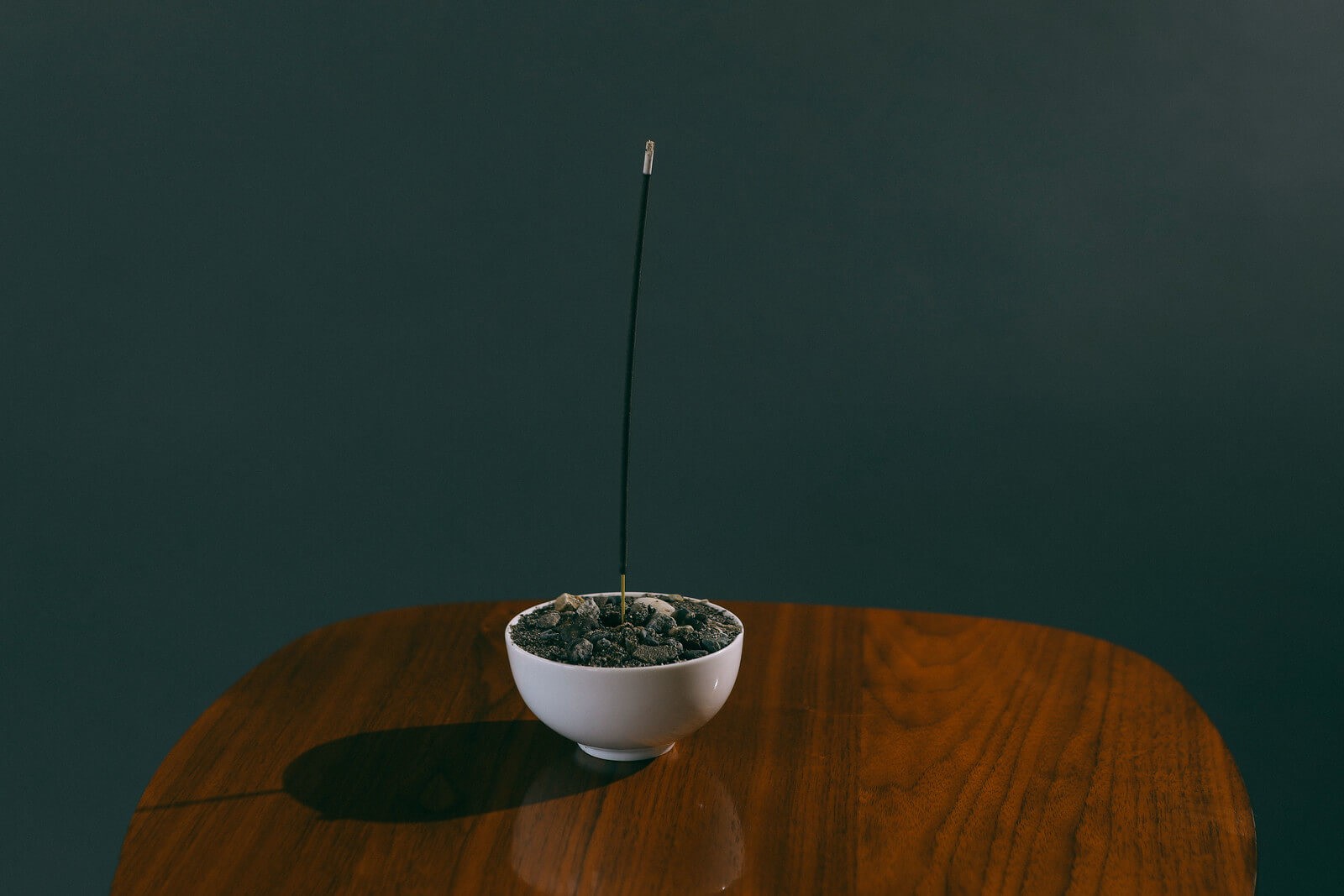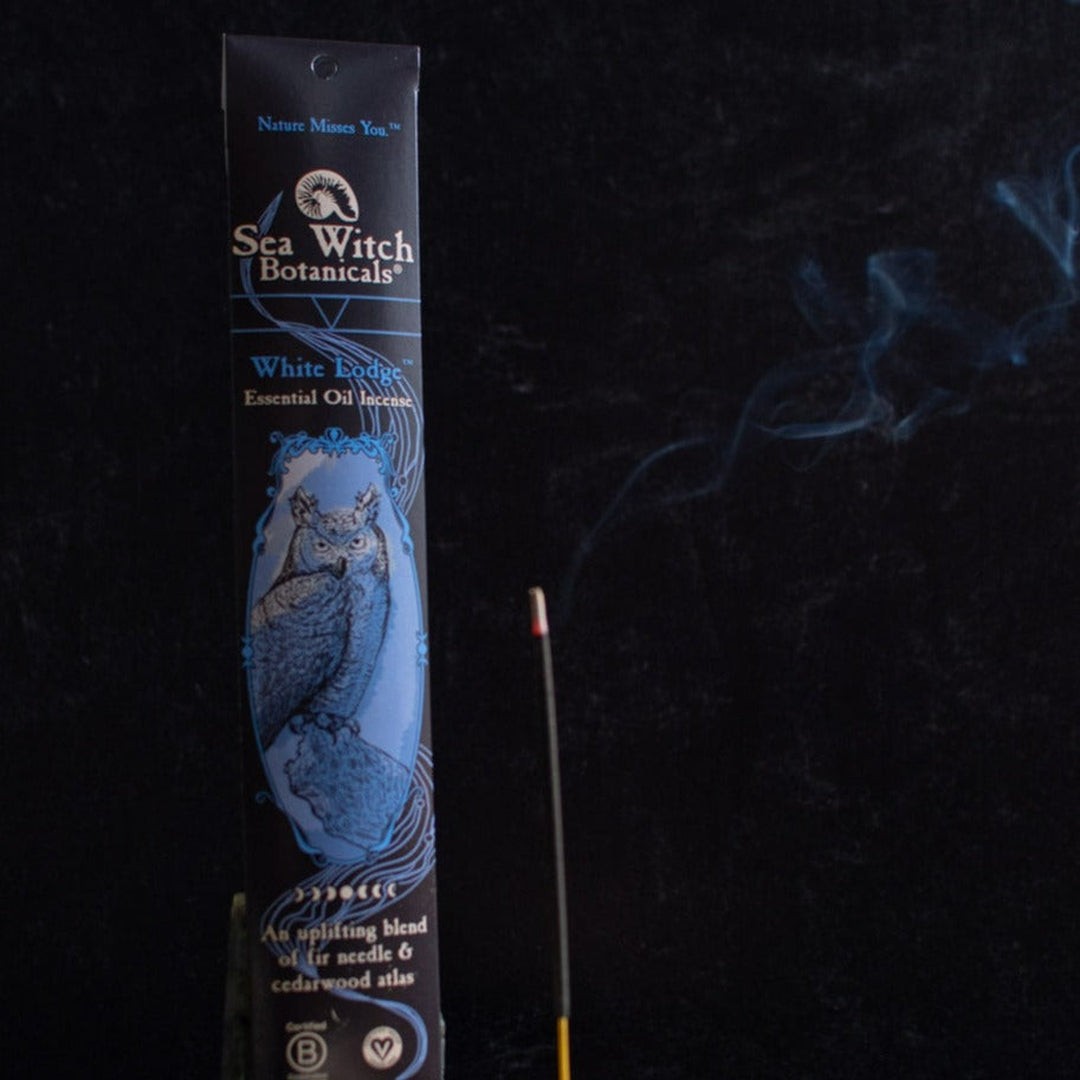What Is Incense? Incense, explored by WHAT.EDU.VN, is any plant matter burned for its aromatic and spiritual properties, encompassing sticks, cones, and raw materials. Discover the history and benefits of incense, from ancient rituals to modern aromatherapy. Learn about spiritual uses, health impacts, and the importance of natural ingredients for a healthier and more fulfilling experience, and uncover words like “fragrant smoke” and “aromatic fumes.”
Table of Contents
- What is Incense?
- The History & Benefits of Burning Incense
- What Does Incense Do, Spiritually?
- Burning Incense: A How-To Guide
- Incense & Health: What You Need to Know
- Synthetic vs. Natural Fragrances in Incense: A Crucial Comparison
- The Benefits of Burning Incense with Essential Oils
- FAQ: Understanding Incense
- Call to Action: Your Questions Answered at WHAT.EDU.VN
1. What is Incense?
Incense is a substance that releases fragrant smoke when burned. In its simplest form, it’s any plant matter ignited to release aromatic or spiritual properties. While many are familiar with Indian agarbatti sticks or small cones, incense also includes raw plant materials like palo santo wood chips or sweetgrass. These materials, when burned, can create a calming atmosphere, enhance spiritual practices, or simply fill a room with a pleasant scent. The key element is the intentional burning of a substance for its aromatic output.
1.1 Popular Forms of Incense:
Incense comes in various forms, each with unique burning characteristics and uses:
- Sticks: These are the most common type, made by coating a bamboo stick with a fragrant paste.
- Spirals or Coils: These burn for extended periods, often used in temples or large spaces.
- Cones: These come in different sizes and burn quickly, releasing a concentrated burst of fragrance.
- Loose Powders: These are burned on charcoal discs, allowing for customizable blends and intensities.
- Raw Plant Materials: These include woods, resins, and herbs that are burned directly.
2. The History & Benefits of Burning Incense
The act of burning incense boasts a rich and storied history, evolving from ancient rituals to modern aromatherapy practices. Its origins can be traced back to ancient Egypt, where it was used by priests for fumigating tombs during the Old Kingdom period. From there, the practice spread to other parts of the world, including India and Southern Asia, as early as 3300 BC.
2.1 Ancient Roots and Spiritual Significance
In ancient cultures, incense played a vital role in religious ceremonies, rituals, and spiritual practices. It was believed to purify surroundings, ward off evil spirits, and facilitate communication with the divine.
2.2 Economic Impact of Incense Trade
Over two thousand years ago, the trade of spices and incense held significant economic importance between the East and West. The Middle Eastern Incense Route, snaking through the Middle East to the Mediterranean region, facilitated the transport of an estimated 3,000 tons of incense each year, as popularized by the Roman Empire.
2.3 Modern Applications
Today, burning incense remains synonymous with the practices of diverse religions, including Catholicism, Buddhism, and Hinduism. Beyond the spiritual realm, incense finds common use in yoga studios, wellness offices, and homes, creating a calming and aromatic atmosphere.
3. What Does Incense Do, Spiritually?
The spiritual purposes of burning incense vary depending on the religious ceremony or intention. Catholic churches burn frankincense to connect communities to their founding patron’s legacy. Palo santo wood was burned during the height of the Incas to clear bad energy. Now, a growing community of energy-aware people uses it.
3.1 Aromatherapy and Mood Enhancement
With a background in aromatherapy, experts develop scents based on their physiological impacts. These scents aid in meditation and mood enhancement. The olfactory senses are powerful, and aromatic substances trigger responses in the limbic system. That is the part of the brain responsible for memory, emotion, and hormone regulation.
4. Burning Incense: A How-To Guide
Burning incense involves a simple process, regardless of its form. The primary goal is to burn the incense slowly over time, releasing its fragrant compounds.
4.1 Step-by-Step Instructions:
- Ignition: Use a lighter, match, or another open flame to ignite the smallest point of the incense.
- Flame Extinguishing: Allow the incense to catch fire, then quickly blow out the flame.
- Smoldering Ember: What remains should be a smoldering ember, slowly burning and releasing aromatic compounds.
- Placement: Place the incense in a dish designed for incense or a bowl of sand.
- Extinguishing: Snuff out the ember by smudging it on a hard surface. However, it is generally expected to burn out completely.
- Safety Precautions: Keep embers and open flames away from flammable materials, such as curtains, paper, or dry herbs.
5. Incense & Health: What You Need to Know
Burning incense can be compared to sitting around a campfire. While there have been studies on the impact of incense smoke on human health, some are considered biased. The quality of materials can vary. Thus, it’s essential to buy incense that lists its ingredients.
5.1 Potential Health Concerns
Incense smoke can be detrimental to health in concentrated amounts. Therefore, it is advised to maintain plenty of airflow in any room with incense. Also, never leave it burning unattended or around drapery in case of a fire.
5.2 Synthetic Fragrances
Synthetic fragrances continue to creep into the incense market, making expensive resins appear cheaper. These incense products are more likely to cause hormone disruption and headaches. That’s why opting for botanically-sourced ingredients is essential.
6. Synthetic vs. Natural Fragrances in Incense: A Crucial Comparison
Traditionally, incense was made with tree resins, aromatic herbs, and woody plants. However, finding high-quality materials in today’s commercial incense market is more difficult. Much of the incense on store shelves combines artificial fragrances and unsustainably harvested plants.
6.1 Regulation of Fragrance Ingredients
Ingredients listed as “fragrance” or “parfum” are unregulated by the government. These chemicals are unhealthy for humans and the environment, and breathing in smoke from them further impacts our respiratory systems.
6.2 Short-Term and Long-Term Effects
Synthetic fragrances have been known to cause headaches and skin irritations in the short term. In the long run, they can have more serious adverse effects on our health.
6.3 Airborne Chemicals
When burned, they fill homes with airborne phthalates and parabens. These substances are known as endocrine-disrupting chemicals. They have negative impacts on hormone levels.
6.4 Importance of Research
When shopping for incense, research is essential. Ensure you’re burning incense made with natural ingredients like charcoal and essential oils. Avoid synthetic fragrances at all costs.
7. The Benefits of Burning Incense with Essential Oils
Burning incense made with all-natural ingredients offers many benefits. Indulging our olfactory senses is more powerful than we realize. Aromatherapy is based on the fact that aromatic substances can be used for healing and medicinal purposes.
7.1 The Limbic System
When we inhale a smell, signals are sent to our limbic system. This part of the brain is responsible for memory, emotion, and hormone regulation. Different scents trigger different responses in our brains.
7.2 Desired Effects
Breathing in essential oils and pleasant aromas from burning incense can create various desired effects:
- Increase Calm and Focus
- Reduce Stress and Anxiety
- Aid Sleep
- Complement Yoga or Meditation Practice
- Stimulate Creativity
- Purify Space
- The Simple Pleasure of Enjoying a Lovely Scent
7.3 Choosing Quality Incense
If you’re interested in burning incense for any of these positive effects, seek out the best quality. Incense made with low-quality materials and synthetic fragrances is a pollutant. Look for companies that list all ingredients and find which essential oils resonate most with you.
7.4 The Sea Witch Botanicals Approach
At Sea Witch Botanicals, we make all our incense with pure essential oils and natural resins. We believe in keeping our waterways clean, and that starts with cleaning the air we breathe. Crafted without any chemical preservatives or synthetic fragrances, our incense sticks are made with bamboo-derived charcoal that cleans the air as it burns. It pulls impurities and germs out of the air.
8. FAQ: Understanding Incense
| Question | Answer |
|---|---|
| What exactly is incense? | Incense is a material that releases fragrant smoke when burned, typically composed of aromatic plant materials, often used for religious, ceremonial, or aesthetic purposes. |
| What are the main types of incense available? | The main types include sticks, cones, coils/spirals, loose powders, and raw plant materials. Each type offers a different burning experience and intensity of fragrance. |
| Is burning incense safe for my health? | Burning incense can pose health risks if not done correctly. Ensure good ventilation and avoid incense made with synthetic fragrances. Natural ingredients are generally safer. |
| How can I tell if incense is made with natural ingredients? | Look for incense that lists all its ingredients and avoids “fragrance” or “parfum” in the ingredients list. Research brands and choose those committed to using pure essential oils and resins. |
| What spiritual benefits are associated with incense? | Spiritually, incense is used to purify spaces, enhance meditation, promote relaxation, and connect with the divine. Different scents can evoke different emotional and mental states. |
| How do essential oils in incense affect my mood? | Essential oils send signals to the limbic system, which regulates emotions, memories, and hormones. Specific scents can trigger feelings of calm, focus, or energy. |
| Can incense help with sleep? | Yes, certain incense scents like lavender have sedative properties that can promote sleep and combat insomnia. Burning lavender incense before bed may help you relax and fall asleep more easily. |
| How does incense purify a space? | Burning incense has been shown to reduce bacteria in the air. Some incense types, like those made with bamboo-derived charcoal, can also help to pull impurities and germs out of the air. |
| What should I avoid when burning incense? | Avoid burning incense near flammable materials, leaving it unattended, or using incense with synthetic fragrances. Good ventilation is crucial to minimize potential health risks. |
| Where can I find high-quality, natural incense? | Look for brands that prioritize natural ingredients and transparency in their production processes. Online retailers specializing in aromatherapy or natural products are good places to start. |


9. Call to Action: Your Questions Answered at WHAT.EDU.VN
Do you find yourself searching for answers, spending hours online, or unsure where to turn for reliable information? Are you seeking clarity without the burden of costs or complicated processes?
At WHAT.EDU.VN, we understand the challenges of finding quick, accurate, and free answers to your questions. Whether you’re a student tackling homework, a professional seeking expert insights, or simply a curious mind eager to learn, we’re here to help.
9.1 How WHAT.EDU.VN Can Help You
- Free Question Platform: Ask any question on any topic and receive answers at no cost.
- Quick and Accurate Responses: Our community of knowledgeable users and experts provides timely and reliable answers.
- Easy-to-Understand Information: We break down complex topics into simple, accessible explanations for everyone.
- Community Knowledge Exchange: Connect with others, share insights, and expand your understanding through collaborative learning.
- Free Consultation Services: Get personalized advice and answers to your specific questions without any consultation fees.
9.2 Ready to Get Started?
Don’t let your questions linger unanswered. Visit WHAT.EDU.VN today and experience the ease and convenience of our free question-answering platform. Our goal is to provide you with the knowledge you need, when you need it, without any barriers.
9.3 Contact Us
Have more questions or need assistance? Reach out to us:
- Address: 888 Question City Plaza, Seattle, WA 98101, United States
- WhatsApp: +1 (206) 555-7890
- Website: WHAT.EDU.VN
Join the what.edu.vn community today and unlock a world of knowledge at your fingertips. Ask your questions, get your answers, and explore the endless possibilities of learning with us.